The Best Jazz Albums of 2011
Wunderkind trumpeters, South Korean singers, and jazz that doesn’t quite sound like jazz.
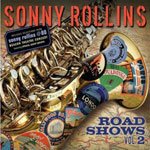
1. Sonny Rollins: Road Shows, Vol. 2 (Doxy). These live-concert tracks from Rollins in his 80th year, mainly from his 2010 birthday bash at the Beacon in New York City, find the saxophone colossus in stellar form, with a stripped-down band (his best in ages) and guest stars pressed to their peaks. Highlights are an endlessly rousing improv on “They Say It’s Wonderful,” trumpeter Roy Hargrove’s lovely musings on “I Can’t Get Started,” and a joust on “Sonnymoon for Two” between Rollins and Ornette Coleman—the first time the two ever played together in public—that’s awesomely otherworldly.
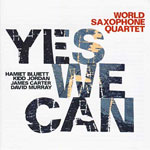
2. World Saxophone Quartet: Yes, We Can (Jazzwerkstatt). A live set in Berlin, this is the best World Saxophone Quartet album in 20 years, mainly for its sweat-dripping excursion on its longstanding concert-opener “Hattie Wall”
and the gorgeous title tune (a tribute to Obama) composed by David Murray and wailed on soprano by James Carter. Hamiet Bluiett’s at his longtime post on baritone sax; Kidd Jordan’s on alto.
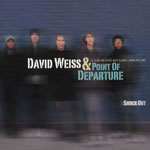
3. David Weiss & Point of Departure: Snuck Out (Sunnyside). Recorded live at New York’s Jazz Standard (are great live albums the new trend?), this quintet, including Weiss on trumpet and J.D. Allen on tenor sax, is like something out of mid-’60s Blue Note, replete with covers of tunes by Andrew Hill and Wayne Shorter, as well as a couple of crisp originals. With free rhythms that remain tethered to structure, the music’s tight and loose, knotty and limber, all at once.
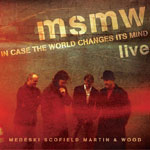
4. Medeski, Scofield, Martin & Wood: In Case the World Changes Its Mind (Indirecto). Rock-blues-jazz by masters who can play all three and fuse them in a way that preserves and heightens the low-down swing-jingle-jangle of all three instead of shmushing them into sludge, as most “fusion” bands do. Recorded on a live 2006 tour (yes, we have a trend), with guitarist John Scofield joining MMW’s whirring keyboards, anchoring bass, and polyrhythmic drums, this two-disc CD is a heady funfest from start to finish. Sensationally well-recorded.
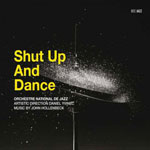
5. Orchestre National de Jazz / John Hollenbeck: Shut Up and Dance (Bee Jazz). Hollenbeck, a drummer-composer who has his own big band, wrote 12 pieces for this 12-piece French ensemble (enough for each musician to take a solo), and they play them like they own them: Complex, sometimes dissonant, swiftly shifting, always adventurous but also accessible music, these tracks are more hip-swaying than usual (hence the title).* Two discs, the first more consistently riveting than the second.
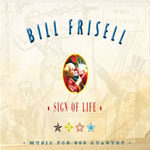
6. Bill Frisell: Sign of Life (Savoy). Is this jazz? John Zorn once defined “great Jewish music” as great music by Jews. Sign of Life (beautifully recorded, in a studio) is great music by jazz musicians, so by that standard, it’s great jazz. Frisell plays guitar and is joined by his 858 Quartet mates, Jenny Scheinman (violin), Eyvind Kang (viola) and Hank Roberts (cello) It’s chamber jazz, with strands of bluegrass and wistful minimalism: gorgeous, witty, and sometimes a bit heartbreaking.
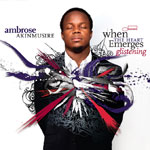
7. Ambrose Akinmusire: When the Heart Emerges Glistening (Blue Note). The breakthrough album by the latest wunderkind trumpeter-composer, it’s straight-ahead jazz: brash, boisterous, lyrical, with nice harmonic twists around most corners, and a band that’s as tight as they come, especially the interplay between Akinmusire and tenor saxophonist, Walter Smith, who’s been perfecting the art of reading the trumpeter’s mind for a decade.
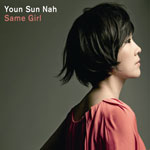
8. Youn Sun Nah: Same Girl (ACT). This South Korean singer, who’s been living the past decade in France, has a wide range, a commanding air, a casual lilt that’s dead-on precise. On paper, some of the tunes might seem twee—for instance, a slow cover of “My Favorite Things,” just her singing and thumb-strumming the kalimba—but they work: It’s potent, appealing stuff. Her northern European band is so-so. She’s never toured the States; she should, soon.
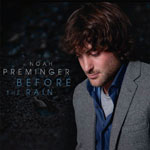
9. Noah Preminger: Before the Rain (Palmetto). Preminger, just 24, plays tenor sax with a husky tone and fleet phrasings, mainly ballads, backed by a band—pianist Frank Kimbrough, bassist John Herbst, and drummer Matt Wilson—that cooks and simmers with controlled abandon.
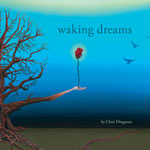
10. Chris Dingman: Waking Dreams (Between Worlds Music). A new name to me, Chris Dingman plays vibes with shimmering percussiveness. His music, on this self-distributed CD, is brooding, haunting; also wistful and romantic. The snap band includes Ambrose Akinmusire on trumpet (see above). Very lyrical, very appealing.
REISSUES:
Miles Davis Quintet: The Bootleg Series, Vol. 1, Live in Europe, 1967 (Columbia Legacy). Twenty years after his death, Sony/Columbia keeps milking the Miles Davis cash cow. Now they’re releasing official versions of bootlegs, and, hey, why not! Vol. 1 (three CDs and a DVD of a televised live concert) captures the “second great quintet” (Herbie Hancock, Wayne Shorter, Ron Carter, Tony Williams) near the end of their run, in peak form, trapeze-flying with no nets: absolutely thrilling.
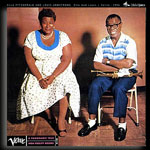
Acoustic Sounds’ Quality 45rpm Pressings, Verve Series. All hail Analogue Productions, the audiophile record company in Salina, Kansas, for hiring the best engineers to invent a new formula for pressing vinyl. The results are simply staggering. Check out the 45rpm remaster of the 1956 Ella & Louis (Fitzgerald & Armstrong). If you have a good stereo, you’ll swear they’re in the room! Direct-order from their website.
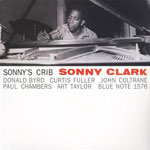
Music Matters Jazz 45rpm Blue Note reissues. Glory, too, to the L.A.-based Music Matters Jazz, which reissues Blue Note classics, packed in handsome gatefold covers and stretched out across two 45rpm black vinyl LPs—which tend to sound better than the original pressings! My favorites from this year, I think, were Sonny Clark’s Sonny’s Crib and Sam Rivers’ Fuchsia Swing Song. Order from their website.
See Magnum's photo gallery of jazz greats.
*Correction Dec. 9, 2011: This article originally misidentified Orchestre National de Jazz as Quebecois. It is French. This article also originally misspelled Kidd Jordan's name.
